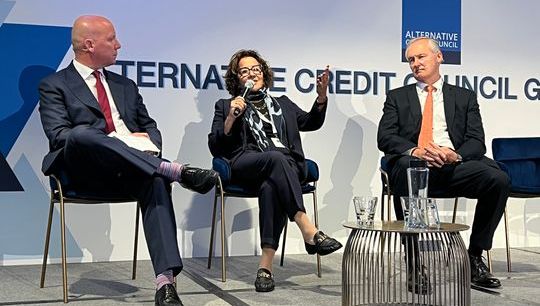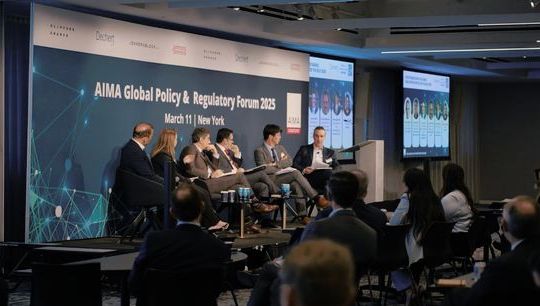AIMA Global Investor Forum 2025 – Key Takeaways
Published: 17 October 2025
AIMA Global Investor Forum 2025 – Key Takeaways
Thank you to the 600+ speakers, sponsors, partners and delegates who have made the 11th annual AIMA Global Investor Forum such an impactful success, driving CAD$10,000 in charity donations to Help For Children to prevent child abuse and provide victim support.
Missed the event, or want to revisit some of the key insights? Check them out below:
- Global allocators are balancing optimism with caution in a fragmented world
Diverging regional growth patterns, shifting trade relationships, and evolving fiscal agendas are shaping how investors deploy capital. Despite concerns around equity index concentration, U.S. markets remain buoyant while optimism in Asia and the Middle East is driven by structural reform and long-term capital deployment. Canada and Europe are reassessing productivity and competitiveness to re-anchor growth in a changing global order. - Volatility has become a prerequisite for performance
Delivering returns above benchmark increasingly requires accepting greater short-term volatility. Allocators are re-examining assumptions formed during years of central-bank support and are incorporating portable alpha and macro-driven strategies to better manage rate and currency risk. Dynamic hedging, diversification across trading styles, and disciplined risk budgets are essential to sustaining performance through regime shifts. - Liquidity as key constraint
With private market allocations rising and distributions slowing, liquidity management has become the central risk consideration. Institutions are reassessing pacing models, cash buffers, and rebalancing frameworks to preserve flexibility, avoid forced selling, and seize opportunities created by market dislocation. - Diversification is being rebuilt from first principles, amid convergence of everything
Traditional stock-bond relationships have weakened, prompting investors to seek new sources of uncorrelated return across commodities, multi-strategy and real-asset exposures. Stress testing and factor attribution are being used to reveal hidden beta and ensure portfolios remain resilient when correlations converge. - All roads lead to Total Portfolio Approach
Given the high correlations, the Total Portfolio Approach is becoming mainstream as allocators of all sizes integrate public and private assets within unified frameworks for risk, liquidity, and capital efficiency. Risk management is increasingly embedded at the enterprise level, linking every investment decision to its marginal impact on total-fund return and volatility. Data, technology, leadership and culture are key enablers of this transformation. - Private credit remains a fixture within institutional portfolios
Now exceeding US$3 trillion in global AUM, private credit continues to attract long-term capital and diversify beyond corporate lending, with ABL, real estate and infrastructure debt strategies all showing growth. Tightening spreads and other side-effects of competitive credit markets are focussing minds on underwriting discipline and manager selection, but investors continue to treat private credit as a strategic rather than a tactical allocation. - Private equity is navigating a liquidity reset
Longer holding periods and slower exits are testing traditional models of value realization, though M&A is slowly thawing. Secondary markets, continuation vehicles, and co-investment structures are providing liquidity solutions, while tokenization and retail access funds hint at future innovation. The focus is shifting from headline IRR to realized cash returns, alignment of interests, and transparency. - Digital assets and artificial intelligence are reshaping the investment landscape
Tokenization, blockchain infrastructure, and digital ownership models are moving from pilot to implementation, improving transparency and settlement efficiency, while continuing to democratize private markets. In parallel, AI is transforming research, risk management, and operations. Asset owners are prioritizing governance, data integrity, and human oversight to ensure technology enhances—not replaces—judgment. - Megatrends are driving a strategic re-allocation of capital
Reindustrialization, energy transition, demographic change and digitalization are redefining long-term opportunity sets. Commodities are being repositioned from inflation hedges to active return engines, while emerging market reforms are unlocking new real-yield prospects relative to indebted developed economies. - Culture, alignment and transparency underpin long-term success and partnerships
Across all asset classes, institutional culture is emerging as a decisive advantage. Organizations that question assumptions, embrace uncertainty, and communicate with transparency are better equipped to navigate disruption while managing public reputational risk. Strong alignment between managers and allocators—anchored in trust, accountability, and shared purpose, along with flexibility in fee structures—will define the next era of alternative investment leadership.









